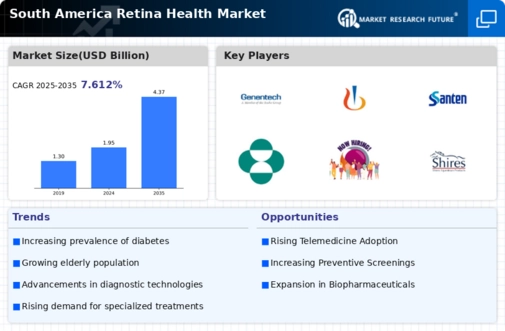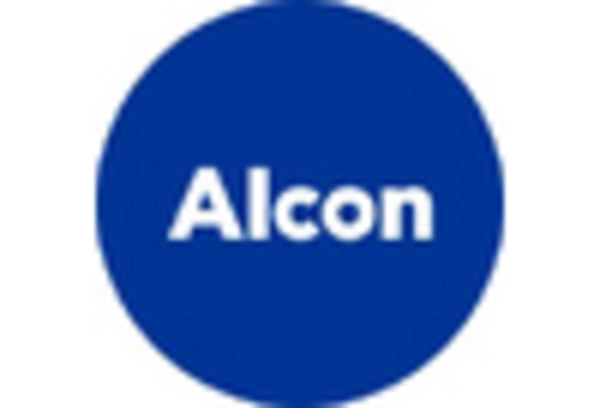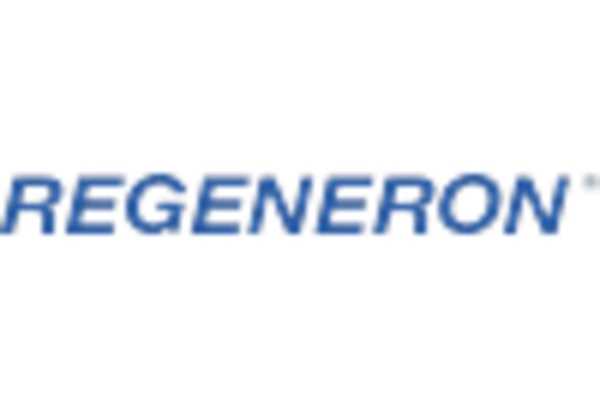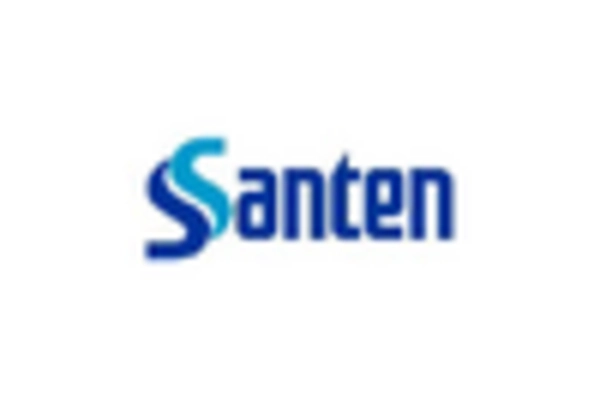Increasing Aging Population
The aging population in South America is a crucial driver for the retina health market. As individuals age, the risk of developing retinal disorders, such as age-related macular degeneration (AMD) and diabetic retinopathy, escalates. According to recent statistics, approximately 15% of the population in South America is over 65 years old, a figure projected to rise significantly in the coming years. This demographic shift is likely to increase the demand for retinal health services and treatments. Furthermore, the healthcare system may need to adapt to accommodate the growing number of elderly patients requiring specialized care. Consequently, the retina health market is expected to expand as healthcare providers focus on developing targeted therapies and preventive measures tailored to this demographic.
Integration of Telemedicine
The integration of telemedicine into healthcare services is emerging as a significant driver for the retina health market in South America. Telemedicine offers patients convenient access to eye care specialists, particularly in remote areas where healthcare resources may be limited. This technology enables timely consultations and follow-ups, which are crucial for managing retinal conditions effectively. Recent studies suggest that teleophthalmology can increase patient engagement and adherence to treatment plans, potentially improving overall health outcomes. As telemedicine continues to gain traction, the retina health market is likely to see an increase in the number of patients receiving timely care. Furthermore, healthcare providers may invest in telehealth platforms, enhancing their service offerings and expanding their reach within the population.
Rising Awareness of Eye Health
There is a growing awareness of eye health among the South American population, which is positively influencing the retina health market. Educational campaigns and initiatives by health organizations have led to increased public knowledge regarding the importance of regular eye examinations and early detection of retinal diseases. This heightened awareness is reflected in a reported 20% increase in eye check-ups over the past few years. As more individuals seek preventive care, the demand for retinal screenings and diagnostic services is likely to surge. Additionally, this trend may encourage healthcare providers to invest in advanced diagnostic technologies, further propelling the growth of the retina health market. The emphasis on proactive health management could lead to improved patient outcomes and a reduction in the prevalence of advanced retinal conditions.
Advancements in Treatment Options
The retina health market in South America is experiencing a transformation due to advancements in treatment options for retinal disorders. Innovative therapies, such as anti-VEGF injections and gene therapy, are becoming increasingly available, providing new hope for patients suffering from conditions like diabetic macular edema and retinal vein occlusion. The introduction of these therapies has the potential to improve visual outcomes significantly. Market data indicates that the anti-VEGF segment alone is expected to grow at a CAGR of 8% over the next five years. This growth is likely driven by the increasing adoption of these treatments by healthcare professionals and the positive clinical outcomes reported by patients. As treatment options expand, the retina health market is poised for substantial growth, catering to the evolving needs of patients.
Government Initiatives and Funding
Government initiatives and funding aimed at improving healthcare infrastructure in South America are playing a pivotal role in the retina health market. Various countries are allocating resources to enhance eye care services, particularly in underserved regions. For instance, recent government programs have focused on increasing access to retinal screenings and treatments, which could lead to a more equitable distribution of healthcare services. Additionally, funding for research and development in retinal health is on the rise, with several governments investing in innovative solutions to combat retinal diseases. This support is likely to foster collaboration between public and private sectors, ultimately benefiting the retina health market. As these initiatives take effect, the overall quality of eye care services is expected to improve, leading to better patient outcomes.


















Leave a Comment